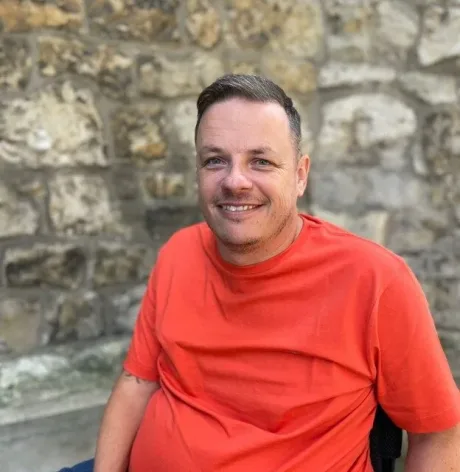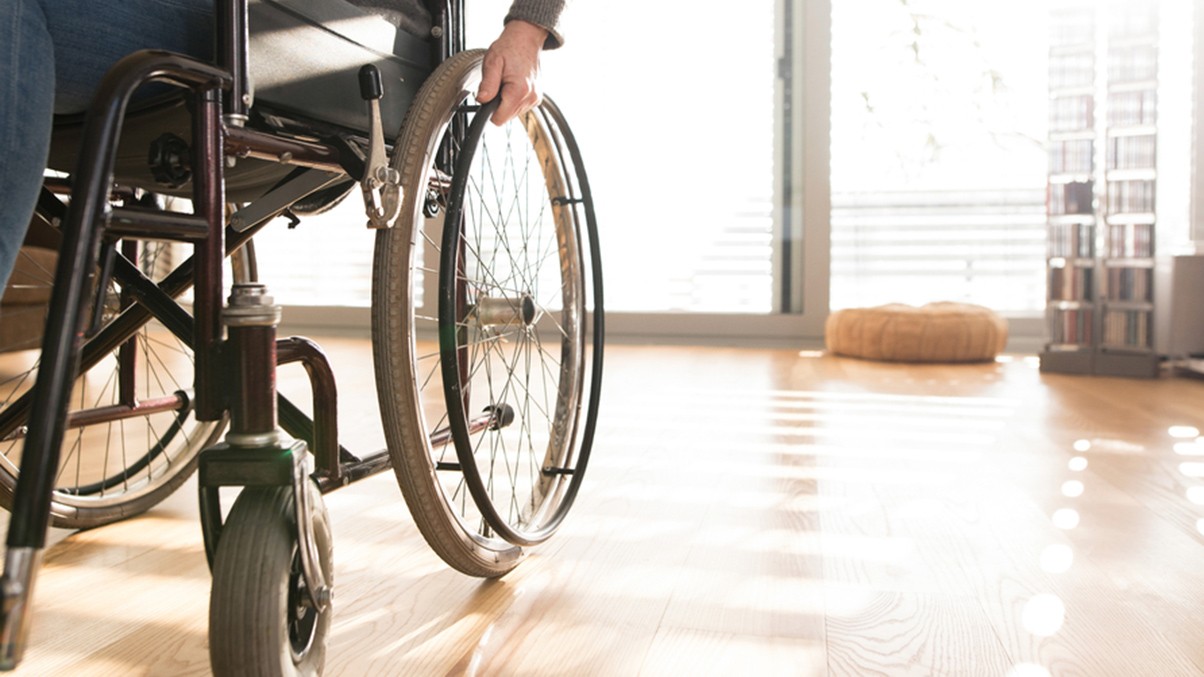Disabled Access Day, first celebrated in March 2015 by Euan’s Guide, began as a day of celebration and awareness to highlight the importance of accessibility and inclusiveness for all, especially for individuals with disabilities. This campaign encourages people, businesses, and organisations to understand the challenges faced by disabled people and to take action towards creating a more accessible and inclusive environment.
Access barriers can make it more difficult for individuals with disabilities to participate in everyday activities, from employment and education to socialising and leisure. Disabled Access Day shines a spotlight on these issues, promoting a dialogue that can lead to real change.
To mark Disabled Access Day 2025, Emma Lyons spoke to James Needham, Regional Outreach Team Leader for South/West Yorkshire and Lincolnshire at the Back Up Trust about his experience of accessibility issues affecting wheelchair users. James sustained a C6 spinal cord injury in 2004 and now works with the Back Up Trust to provide much needed support to others dealing with the challenges of life after spinal cord injury.
How do you find navigating public transport as a wheelchair user, and are there areas still requiring improvement?
Accessibility on public transport has improved since I sustained my injury in 2004, but there are still challenges. I travel more now in my role with Back Up, in particular to visit London, Manchester and Leeds.
Twenty years ago, I used to have to ring train stations and book assistance well in advance. Now at the bigger stations you can generally turn up and support will be on hand. For example, in Doncaster every platform has a ramp and people available to help; on most mainline trains, including LNER and Grand Central, ramps will be available on board. However, there are still services where ramps are not available and some extra time may be needed to sort that out. Twenty years ago, there was maybe one ramp in the whole station and you would have to find someone to get it for you.
Travelling around London is a different kettle of fish. The older tube stations are not great and if a lift is not working then you end up not being able to use that line and have to quickly make other plans or go to a different station where access is available. Staff are usually helpful, however, and there is typically someone around who will be willing to assist. The main stations tend to have an access email address you can contact but I remember using this previously and did not receive a response to my email until about two weeks after I had already completed the journey.
When I have an open ticket to travel and am going from larger stations (for example, Doncaster to Leeds), I usually do not encounter many problems but I don’t think I could say the same for some smaller stations or some in London.
I try to avoid using the bus if I can help it, especially where I live, which is more rural. Often, there is only one accessible space on a bus and if it is taken, you have to wait for the next bus. In small villages, that can take a while! Bus services are better in London because they are so frequent, there tends to be more space and there is usually a lowered pay station beside the accessible space.
What are the key considerations for wheelchair users when planning travel abroad?
I would say plenty of planning and research is key. Most airlines are very accommodating, but it always helps to know what to expect and book things in advance if possible.
When travelling abroad, my wife and I always tend to book through a company and then contact them to book a seat, rather than paying for one. So far, I have never had a problem and I just make them aware that I have my chair and confirm if I am taking my power add on.
Generally, in the airport, I don’t need any assistance; when I get to the plane door it is a bit hit and miss. I have found that the people who are assigned to assist me in and out of my chair on the plane are often not capable of lifting me, even when I have told them when booking the flight that I require a full lift. My wife often ends up assisting me for my own safety.
I have found the staff when I am abroad to be much better than in the UK. I would have thought with the infrastructure we have in the UK, we would have had better service available but that hasn’t been my experience. It starts any trip off on the wrong foot when things go wrong, so it is best to plan things as much as possible.
Hotels can be hit and miss. There is not always a correlation between paying more for an expensive hotel and having better facilities or more space. I don’t see my disability as a barrier; I have travelled to many parts of the world. The trips take a lot of planning and I tend to book at least six to eight months before going and as there is no such thing as a cheap holiday these days, you want it to be the best experience possible.
Have toilet facilities improved in public places in recent years and is there still some way to go?
There is the age-old problem of needing to use the toilet when you are out and about and discovering that the bathroom is a storage room and filled with things that means you can’t properly access it. This is getting better but there are still some places where it is difficult. Using a toilet is always a problem on flights because space is so limited, but I think everyone is different in how they manage on an airplane.
What are your top accessibility tips for wheelchair users?
- Plan in advance and let transport companies/venues know what your needs are.
- Leave yourself plenty of time. When I am travelling somewhere familiar, I tend to leave myself an extra 30 minutes but if it is somewhere I don’t know, I will leave at least an hour. Parking, particularly in big city centres, can be a nightmare and it is not always possible to book spaces.
- Always make sure you have a drink and something to eat in the car if you are driving. It is often a real hassle to stop at services.
- Do your research. When I book accommodation, my wife (who is very organised!) always follows up with an email to ensure they are aware of my needs and equipment. That tends to minimise stress for the most part.
- Be willing to compromise. When at home, you have your own set up and you know your bed and bathroom works for you, but when you travel or are staying in a hotel, you have to accept that it is never going to be as good as home! It has stood me in good stead to expect less!
What can non-wheelchair users do?
I have found more and more people are walking around looking at their phones and when you are sitting in a wheelchair, you are not at eye level so occasionally, people do bump into you. It would be helpful for people to look up when walking and take notice of others around.
I would also say not to automatically assume that people in wheelchairs need help. I don’t mind people asking, but don’t try to help someone in a hands-on way without being sure the person would like assistance.
You can find further information regarding our expertise, experience and team on our Personal Injury and page.
If you require assistance from our team, please contact us.
Subscribe – In order to receive our news straight to your inbox, subscribe here. Our newsletters are sent no more than once a month.





